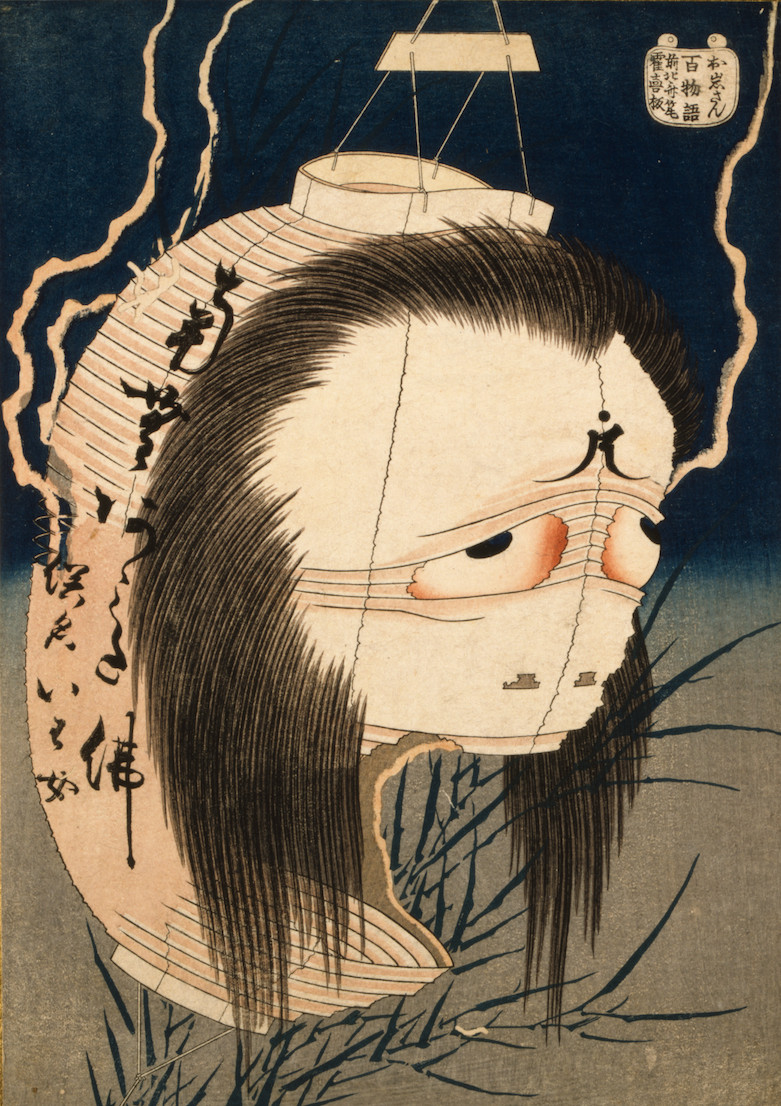There’s something oddly comforting about cradling an old ukiyo‑e print in your hands, especially one like Kuniyoshi’s Lantern Ghost, its pale face emerging just enough from dark water and reeds to make you wonder if it’s watching you back. The first time I saw that drifting form, I was also leafing through Walter Mehrer’s quietly provocative book God or Space? What Difference Does It Make? Suddenly I realized they were asking the same question: do we confront a presence greater than ourselves or simply inhabit the spaces we choose to fill with meaning?
Mehrer’s argument arrives in a whisper rather than a roar. He shows us that purpose can glow gently, just as the lantern ghost does not blaze but casts a soft light. In that gleam we find ikigai—our hidden reason to rise each morning. And in the careful layering of ink on woodblock we glimpse kaizen, the patient accumulation of small improvements that shape a richer life one translucent layer at a time.
The Lantern Ghost resists easy comparison. It does not mimic Buddha or compete with other yūrei. It stands apart on its own terms, teaching us oubaitori, the beauty of each bloom in its own season and echoing Mehrer’s refusal to frame God and space as strict opposites. When the paper shows tears or the text reveals cracks, we do not smooth them over. We celebrate them. Like kintsugi’s golden seams, these fractures become proof of resilience and unexpected beauty.
Look closer and you might see the ghost’s half‑formed hair dribble into reeds, its lantern rim dissolving into mist. Here is wabi‑sabi made flesh: an invitation to treasure life’s fading moments and feel mono no aware, that sweet ache when something beautiful slips away. In that hush we find empathy for the silent witness in the print. This is omoiyari, the compassion that arises when we see ourselves reflected in something other than ourselves.
Beyond the print you’ll find echoes of these ideas in other artists who dwell in space between. Vincent van Gogh’s Starry Night swirls with emotion as stars pour across the canvas, inviting both wonder and that delicious sense of cosmic emptiness. Banksy’s “Girl with Balloon” tethers a red heart to a child’s fingertips, then sets it adrift against a blank wall, leaving you to decide whether it speaks of hope, loss or something cheekily subversive. Whether it’s the misty shorelines of Hiroshige or a screaming sky in Arles, each of these works asks you to fill the void with your own meaning.
There is a quiet mystery woven through every brushstroke, print and stencil, a sense of yūgen so deep that words almost fail. The ghost offers no backstory. It simply is. When certainty eludes us we remember shikata ga nai, accepting what cannot be changed. We let our reflections mingle with branches and clouds and learn kachō fūgetsu: that self and nature exist as one seamless scene.
Ultimately, both printmaker and philosopher show us how to move through life without clinging to thought. Each inked line and each subtly radical page carries the spirit of mushin, no‑mind, pure presence. And as you close the book and set the print aside you sense a final circle completing itself. The question of God or space may never be answered, yet in asking it you draw your own enso, a perfect circle of inquiry that holds your wonder, your doubts and your fleeting brush with the divine.
Final Thoughts
Next time you find yourself standing before an old ghostly print, staring at a night sky or passing a street mural, remember that the real revelation happens in the simple act of wonder. Aha—that moment when you realise the ghost doesn’t haunt you, you haunt the ghost. And that, dear reader, is both very cheeky and very, very Japanese.
Lantern Ghost by Utagawa Kuniyoshi (mid 19th century)


Leave a Reply